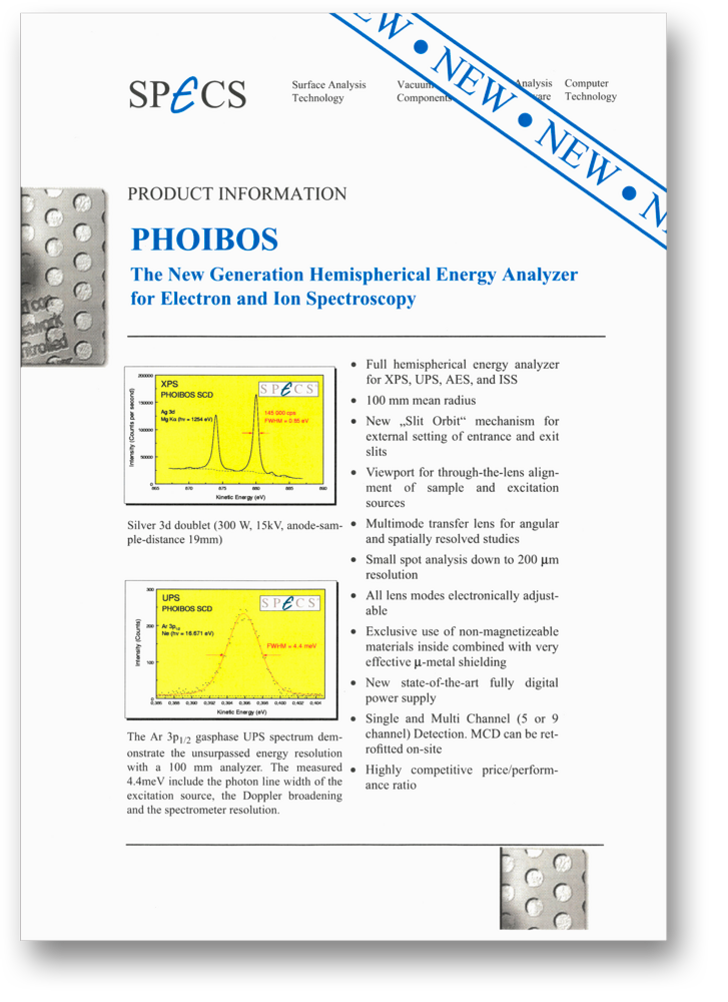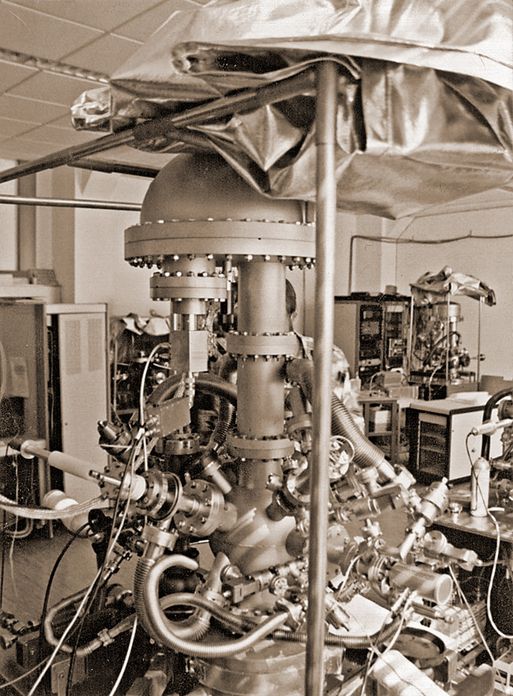The 25 years long PHOIBOS analyzer journey: From “the one-and-only” to an adaptable herd of specialized workhorses for (NAP-)XPS and ARPES in surface science.
In 1998 SPECS developed a new, fully hemispherical energy analyzer - laying the foundation for the most adaptable and successful analyzer in the market: the PHOIBOS. It has been a jump start with nine units sold within a year after market launch. A phenomenal acceptance of the new generation of analyzers for electron and ion spectroscopy.
Today – 25 years and many stages of evolution later – the PHOIBOS analyzer series is the market-leading allrounder for X-ray (XPS) and ultraviolet photoelectron spectroscopy (UPS) and all related techniques. With the reliability and persistence of a true workhorse, it is the first choice for a wide range of applications, such as in surface chemistry, materials science, surface physics and all adjacent fields. Continuous improvements over the past years have resulted in a scientific instrument that is more versatile, faster, more accurate and easier to use than ever before. The latest generation of different types in the PHOIBOS series ranges from the compact PHOIBOS 100 to the versatile PHOIBOS 150 and the truly unique PHOIBOS 225. The PHOIBOS 150 exists in different versions for example for Spin-resolved ARPES, Near Ambient Pressure XPS or HAXPES, while the PHOIBOS 225 provides the basis for studies with the highest energy and angle resolution.
All these variants of the PHOIBOS analyzers reflect the close exchange of SPECS and the customers from the scientific community, turning customers' trust into new technologies and applications. SPECS would like to thank all our PHOIBOS customers for this fantastic quarter of a century. Be sure, the journey continues…
If you have any questions about the PHOIBOS series or any of our other products, please contact info@specs.com or your local sales and service representative.


